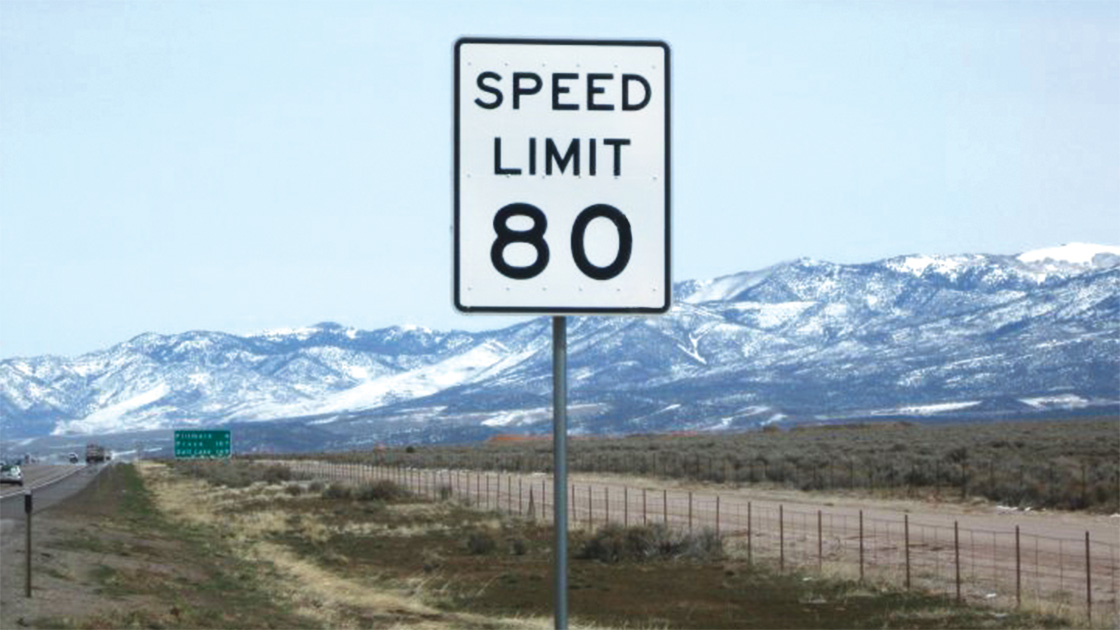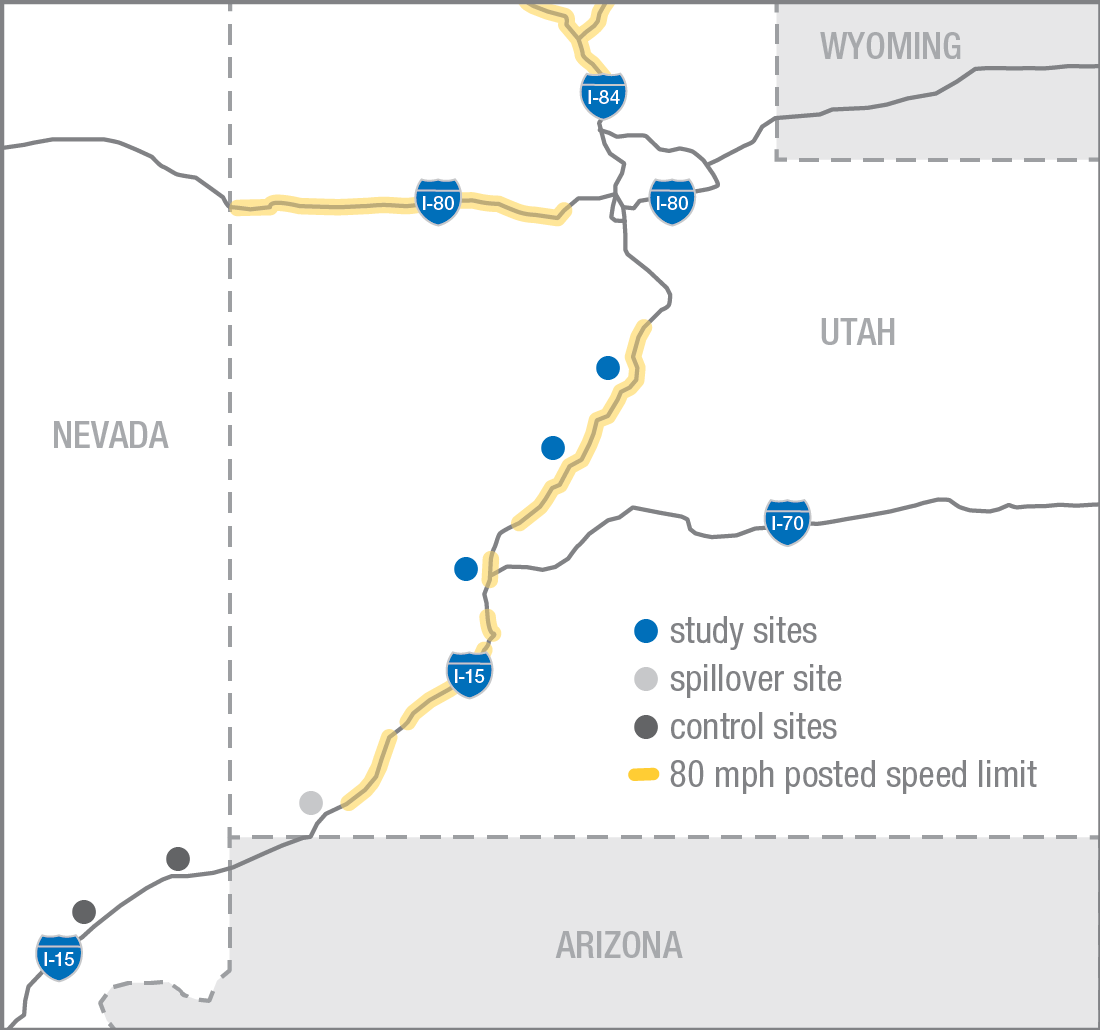Average speeds increase after Utah raises limit to 80 mph
June 23, 2016

A new study on the effects of speed limit increases in Utah adds to the abundant evidence that raising speed limits results in higher travel speeds and more vehicles exceeding the new limit. It also undercuts the claim that raising limits reduces speed differences among vehicles on the same road.
A Utah law allowing for limits higher than 75 mph on rural interstate highways went into effect in May 2008. The first sections of roadway were changed to an 80 mph limit in January 2009, and more were added in November 2010 and October 2013.
The study looks at the effects of the 2010 and 2013 increases. IIHS Senior Research Transportation Engineer Wen Hu collected speed data for passenger vehicles and large trucks on several stretches of Interstate 15 before and after the speed limit changed from 75 mph to 80 mph. She also looked at a "spillover" location about 1 mile down I-15 from an 80 mph speed zone, as well as more distant control sites where the speed limits remained 75 mph.
Hu found that average passenger vehicle speeds within the 80 mph speed zones and at the spillover location were about 3 mph higher after the speed limit increase than would have been expected without it — 78 mph instead of 75 mph.
Utah 80 mph speed limit zones as of October 2013 and study sites

The likelihood that a passenger vehicle was traveling over 80 mph within the 80 mph zones was more than 120 percent higher than would have been expected without the speed limit change. At the spillover site, the probability was nearly 90 percent higher. Average large truck speeds increased by nearly 2 mph within the 80 mph zones. However, the increase in the likelihood of trucks exceeding 80 mph wasn't statistically significant. There were hardly any trucks exceeding 80 mph before the speed limit increase, and only 2 percent were traveling that fast afterward.
Higher speeds have been shown to lead to more frequent and more deadly crashes. Based on a previously developed model that quantifies the effects of speed on crash risk, Hu estimated that an increase in speed from 75 mph to 78 mph would raise the rate of fatal crashes by 17 percent.
"Six states now have maximum speed limits of 80 mph, and Texas allows speeds as high as 85 mph," says Chuck Farmer, IIHS vice president for research and statistical services. "These extreme speeds shave off a few minutes of travel time at the expense of people's lives."
A recent nationwide study by Farmer found that 33,000 fatalities could have been avoided if there had been no speed limit increases between 1993, when all states had maximum limits of 65 mph or 55 mph, and 2013 (see "Speed limit increases cause 33,000 deaths in 20 years," April 12, 2016).
Proponents of higher limits often argue that speed variation, not speed, is the actual cause of increased crash risk. They claim that higher limits improve safety by bringing all vehicles up to the same speed.
It is true that less speed variation is associated with fewer crashes because it cuts down on passing maneuvers and lane changes. However, in the Utah study, the new 80 mph limit didn't lead to more vehicles traveling at similar speeds. In fact, speed variation was higher than would have been expected without the speed limit change both within the 80 mph zones and at the spillover site, though these increases weren't statistically significant, possibly because of the small sample size.
IIHS researchers first looked at the effect of Utah's 80 mph limit in a study of the sections of I-15 where the limit was raised in 2009. They found that travel speeds actually decreased from 2008 to 2010 at the sites where the speed limit went up, though not by as much as at the sites where the limit stayed the same. The unexpected decreases were likely a result of the economic recession, which caused a shift in driving patterns around the country.